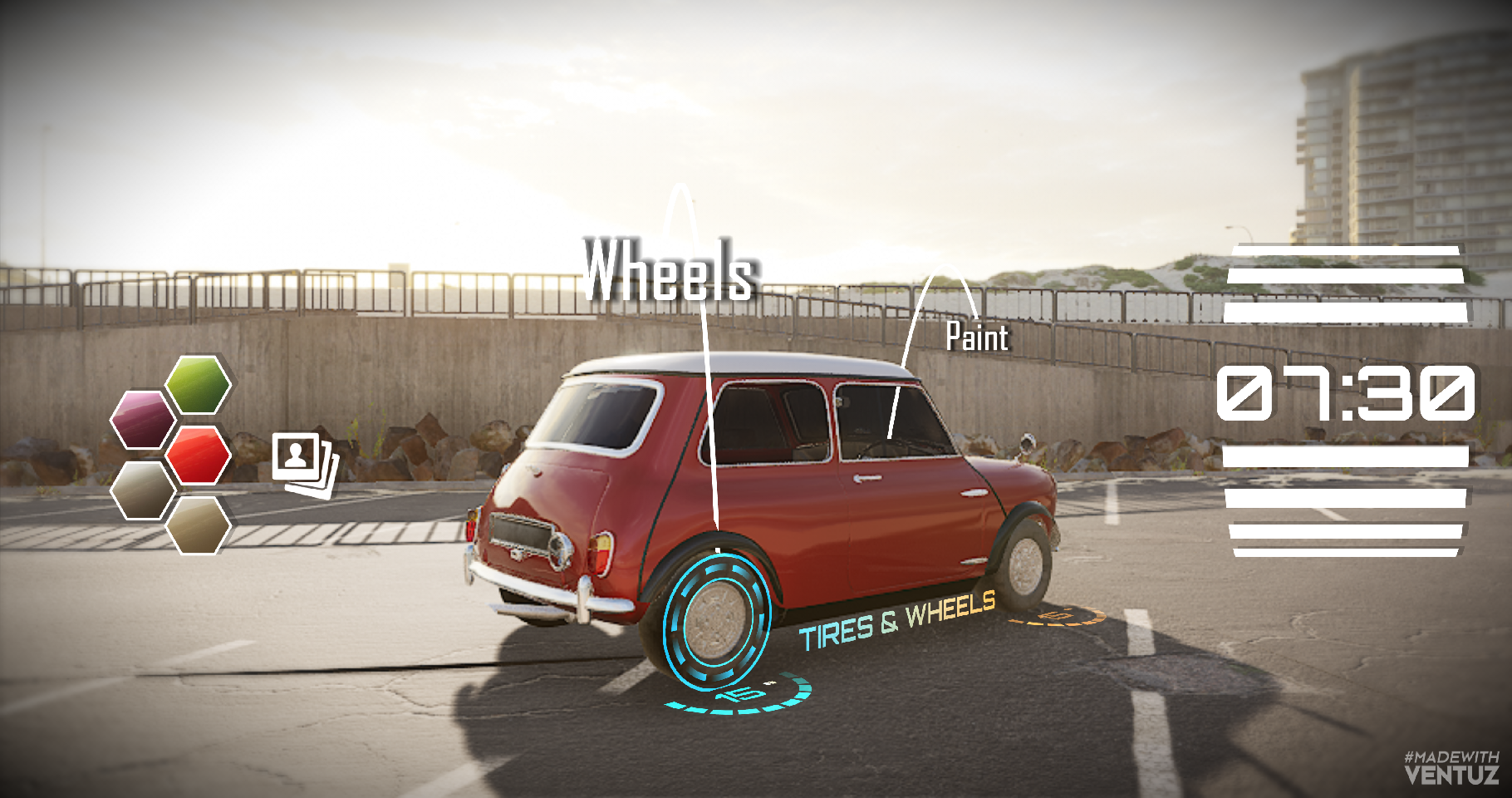Unreal IntegrationMGPU: , Cluster:
Table of Contents
The Unreal Integration offers solutions to some more advanced use cases and combines the advantages of both the Unreal Engine and Ventuz. This page gives you an overview of the features, use-cases and limitations of that integration. If you want to dive into implementing a Ventuz presentation using the Unreal connection, head to our Unreal How To.

The current implementation of the Unreal integration sends Color and Depth Buffers from Unreal synchronously with ancillary data in both directions, like camera tracking data, user interaction data, dynamically read data sets or, in a template based workflow, texts, assets etc. defined by a journalist for the next show in the Ventuz Director. Ventuz manages multiple instances of the Unreal Engine, with different content if needed, be it packaged stand-alone executables or unpackaged Unreal Editor project.
Introduction
Please note that the current version of the Ventuz <-> Unreal Engine communication may have some synchronization issues which are caused by the Unreal Engine API. Epic is aware of this problem and will improve its API at some point. See limitations for further details.
The Unreal Integration works with Ventuz' Engine to Engine connection (E2E) and offers a synchronized transmission of Unreal's rendering result to Ventuz. Following is list of the most important features and, if applicable, the proper pages with more details on that topic. As well you can check out the Unreal How To that gives you a general overview of the integration.
- Synchronization: Ventuz times the rendering of Unreal and catches the color and depth buffer after each rendered frame to composite them into each layer using the E2E connection.
- Depth Occlusion: By interpreting the depth buffer Ventuz can occlude Ventuz objects by unreal objects. Use the E2E Layer Node that acts as a 3D Layer but composites the contained 3D World in said way.
- Multi-Connections: You can have virtually unlimited connections to Unreal instances in your Ventuz Scene. Each E2E Node can define which connection to use via Bindings to a Provider Node.
- Ancillary Data: You can send any data that you need on the other engine to render the next frame. These are sent synchronously, just like the color and depth buffer. So this can be especially useful in cases where you have e.g. Tracked Cameras. Ancillary data can be sent or received with the E2E Axis Nodes and E2E Data Nodes. Also have a look at the respective Blueprint Nodes.
- Live-Link and Auto-Start Configurations: You can either establish a connection to an already running Unreal Instance - Ventuz then does not care about the Unreal process and you have to manually handle that. When working with a Configuration File you can also define an Unreal Project or Standalone-Executable that is started together with the Ventuz Scene. The latter is more useful when deploying your finished scene while the first can be used to start with the design process more easily and intuitively. Additionally you can control a connection with the E2E Control Node.
Getting Started
To start working with this integration you can follow the Unreal Integration How To. Here you can find the installation process of the Plugin, any needed configurations and a quick guide to the most important features of the integration.
Limitations
While being highly flexible, the Unreal Integration also comes with some limitations. Keep these things in mind while designing an application using the integration:
- Transparent Unreal Objects: As transparent objects need to be rendered last to function properly, it is not possible to place Ventuz behind half-transparent Unreal Objects. This includes glass, smoke, light cones etc.
- Alpha/Keying: Unreal does not preserve any alpha information in its color buffer. So it is not possible to alpha blend an Unreal rendering onto another Ventuz Layer or to externally key a live video signal "into" the Unreal rendering. For virtual sets specifically this means: the host of a show cannot be keyed behind an Unreal Object - e.g. a table. Thus, occluding objects must be rendered in Ventuz.
- Synchronization: Sometimes switching to full screen in Ventuz causes a one frame delay between the two engines. Rarely this desynchronization temporarily also happens without going into fullscreen - appearing more often when Ventuz is under heavy performance load.
- Reflections, Shadows etc.: Keep in mind that Ventuz has no further information about the Unreal World, except how it looks from the camera perspective. And Unreal doesn't even have these information from Ventuz while rendering. So reflections, shadows and anything that needs rendering from another perspective is harder to implement, while still possible.
Due to the sync issues mentioned above it is not advised to use the Unreal Integration in a MGPU or Cluster Scenario!
Conclusion
While this page gives a rough overview of the Unreal Integration, there are more advanced topics to explore, have a look at the Unreal Integration How To and the E2E Nodes Overview. Also if this is your starting point of your journey with Ventuz you might want to check out some of our Quick Guides - especially the 3D Quick Guide and Logic Quick Guide.